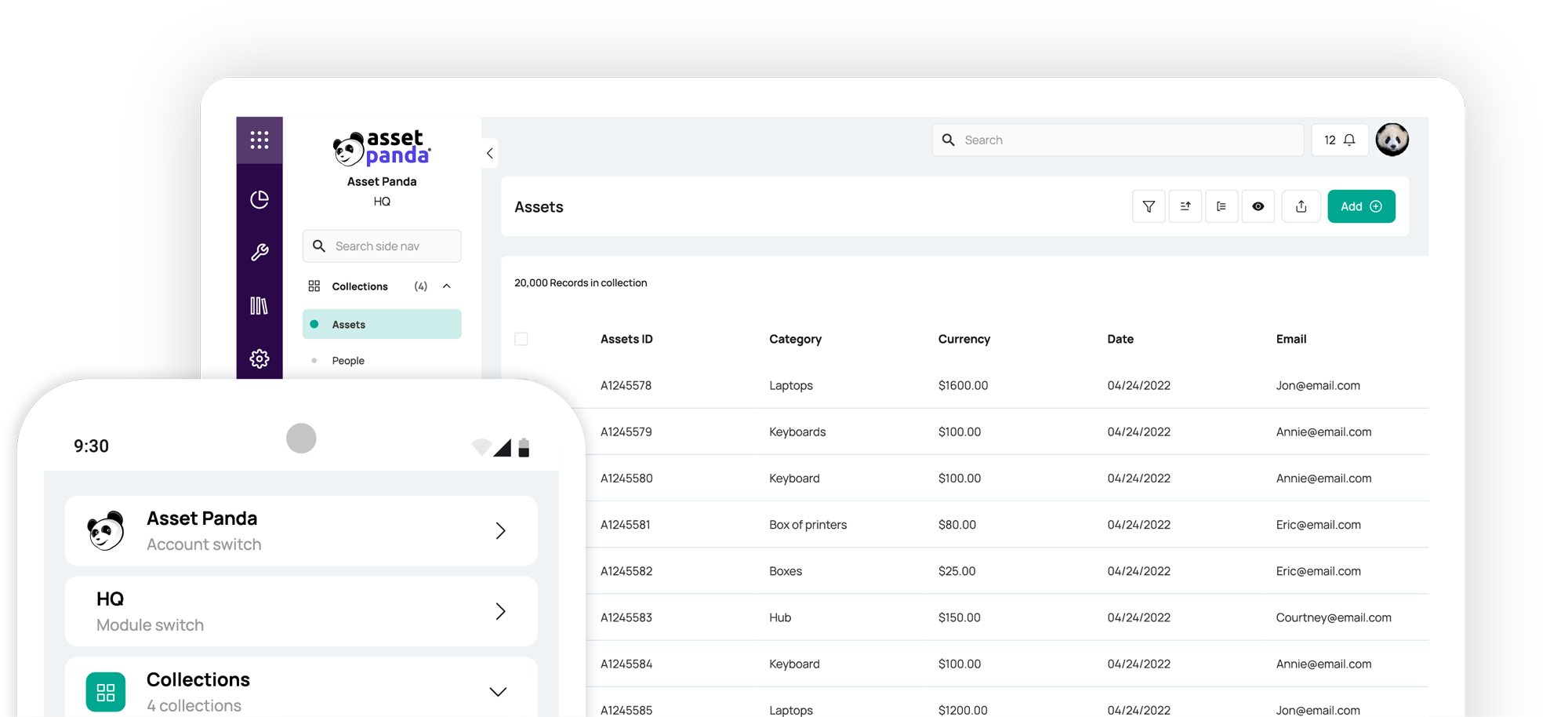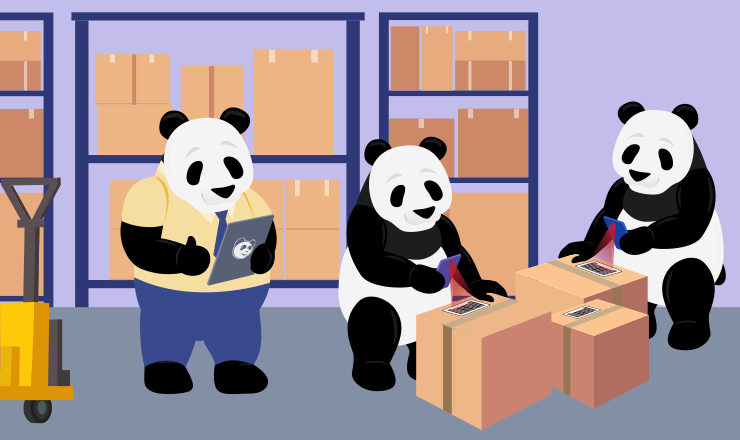What is Planned Obsolescence? Understanding The Modern Product Lifecycle
Blog

Table of Contents
Take Control of Your Assets
A personalized demo is just one click away.
Have you ever felt like it took no time at all for your brand-new smartphone to slow down to the point of needing replacement? It isn’t your imagination; it’s planned obsolescence in action. Planned obsolescence, sometimes called premature obsolescence, is a policy of creating products that have an intentionally limited lifespan in order to maximize corporate profits and generate repeat customers.
Planned obsolescence may feel like an irritating new byproduct of corporate greed, but its origins date back long before smartphones existed. The term was coined in 1932 by Bernard London in his pamphlet, ‘Ending the Depression through Planned Obsolescence.’ Rather than being a negative thing, London portrayed the practice as a way to stimulate the economy—and it has stuck around ever since.
Let's dive into some examples of what planned obsolescence is and how it affects businesses, consumers, and the overall economy. Plus, we’ll discuss how you can protect your organization from its most negative effects by utilizing proper lifecycle management.
What is Planned Obsolescence?
Planned obsolescence is a business strategy in which products are designed to be useful for a short amount of time. Businesses can bring about planned obsolescence in a number of ways, some of which create a positive experience for customers, and others that seem borderline unethical. Here are some of the ways you may encounter planned obsolescence in action.
Regularly updated designs and features
This strategy dates back to 1924, even before the term “planned obsolescence" came into use. When the American automobile market began to reach its saturation point, General Motors executive Alfred P. Sloan Jr. proposed that the company annually update its designs to encourage customers to buy the newest model. When product designs are updated on a routine schedule, people may turn into repeat customers in order to have the latest and greatest version of a product.
Contrived durability
When nylon stockings were invented in 1939, the hosiery was nigh indestructible—and this presented a problem. DuPont, the inventor of the stockings, realized that if the stockings lasted too long, nobody would ever need to buy more. DuPont tasked its scientists with making the product less durable so women would become repeat customers. Today, products ranging from tech hardware to household appliances are designed to eventually fail so you’ll need to buy a replacement, whether you want to or not.
Prevention of repairs
If the product eventually fails, why don’t enterprising consumers simply repair it? In many cases, that’s become impossible to do. For example, take Apple smartphones. Even if you wanted to replace the battery in your iPhone, you’d need special tools to unscrew the case, and even if you get them, you’ll find that the battery is glued inside. In 2020, Apple reached a settlement over a class action lawsuit commonly known as “batterygate,” in which customers alleged consumer fraud against Apple. Since then, it has become easier to replace an iPhone’s battery. Still, there are other hurdles, like Apple no longer supporting the software that older phones run on, forcing you to switch phones eventually.
Perceived obsolescence
Sometimes a product’s obsolescence is only an illusion: the product still functions perfectly fine, but the consumer believes it is inferior to a newer model. Look no further than Nike Air Max sneakers. These shoes can be worn daily for years, but Nike is constantly introducing new styles and colorways to drum up business—some of which are only available in certain regions or for a very limited time. Even though these sneakers don’t have any new or improved features or anything different aside from their appearance, they continue to generate repeat customers by fostering a fear of missing out.
The Impact of Planned Obsolescence
Now we know what planned obsolescence is, but what exactly does it cost? What is planned obsolescence doing to our world, our companies, and ourselves as consumers? Here are some of the effects that this widely implemented practice has on our society.
Environmental
Modern landfills are full of last year’s model of automobiles, household appliances, or hardware. When consumers are compelled to constantly replace these products, it creates more garbage than if these products could be repaired or utilized for longer. Electronic waste, in particular, is one of the fastest-growing categories of landfill trash. In 2020, it was estimated that 50 million tons of e-waste were generated, and only 20% was recycled into new products.
Consumer cost
A study by the University of Wisconsin-Madison found that planned obsolescence generates an added cost of $1,043 per year for the average American household, just for electronic devices alone. Another study that included other household items known to be impacted by planned obsolescence, like refrigerators and light bulbs, would likely show an even bigger impact. By replacing products more regularly than they otherwise would, individuals are paying for this business practice whether they realize it or not.
Impact on companies
It isn’t just individuals who see their wallets empty out due to planned obsolescence. Even the international fast food chain McDonald’s is not immune to the issue. When customers observed that the McFlurry machine always seemed to be broken, further investigation revealed that McDonald’s actually did not have the ability to repair its McFlurry machines. In 2024, the United States Copyright Office granted McDonald’s an exception: the right to repair its own machines. This McDonald’s example is a major one, but smaller companies also feel the impact when they’re unable to repair, only replace, their own assets.
How to Reverse Planned Obsolescence with Asset Panda
Planned obsolescence is here to stay, but you don’t have to fall victim to it. There are many ways you and your organization can take action. Some of them include:
- When you buy a product, buy an extended warranty to protect against failure.
- Buy products that have spare parts readily available, so you can repair them or cheaply hire a repair person to fix them when they break.
- Buy from organizations that are committed to recycling obsolete products and using safe, environmentally friendly materials in their construction.
- Support retailers that don’t rely on planned obsolescence and that create durable products.
Committing to reversing planned obsolescence isn’t a mindless task. It requires organization: from the retention of product warranties and sales receipts to maintaining a repair schedule for your assets. In order to keep track of all these moving parts, consider using asset tracking software.
Asset Panda helps organizations plan for the inevitable obsolescence of their assets by making it easy to keep track of every data point. Keep everything about an asset, like its purchase date, warranty info, next scheduled repair, expected useful life, and predicted replacement date, to prevent surprise costs throughout the fiscal year. Since Asset Panda is a cloud-based app, you and your employees can access critical dates and details in real-time, accessible 24 hours a day, seven days a week.
Planned obsolescence doesn’t have to be a thorn in your organization’s side. Discover how Asset Panda can streamline asset lifecycle tracking and request your personalized demo today.
Take Control of Your Assets
A personalized demo is just one click away.
Related News & Press
Learn more from a solution specialist
Schedule a demo to find out how you can transform your workflows with Asset Panda Pro
Contact our team at (888) 928-6112



